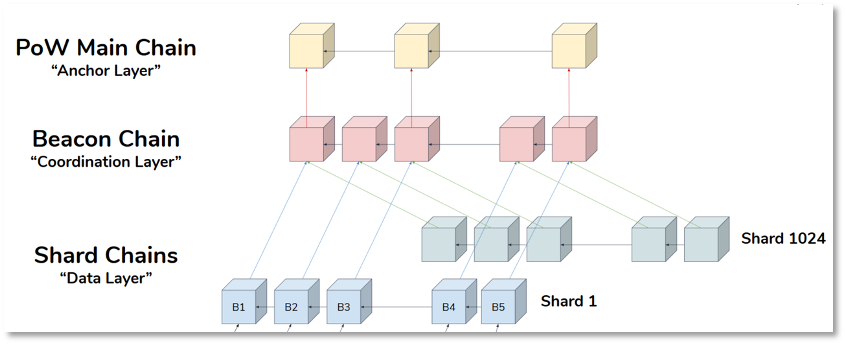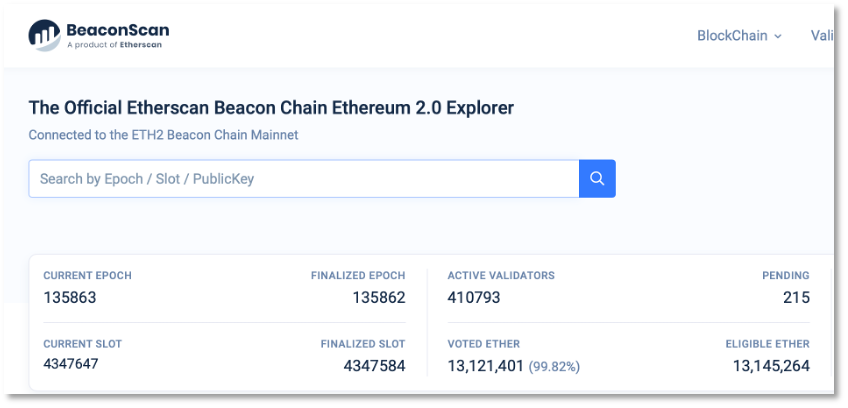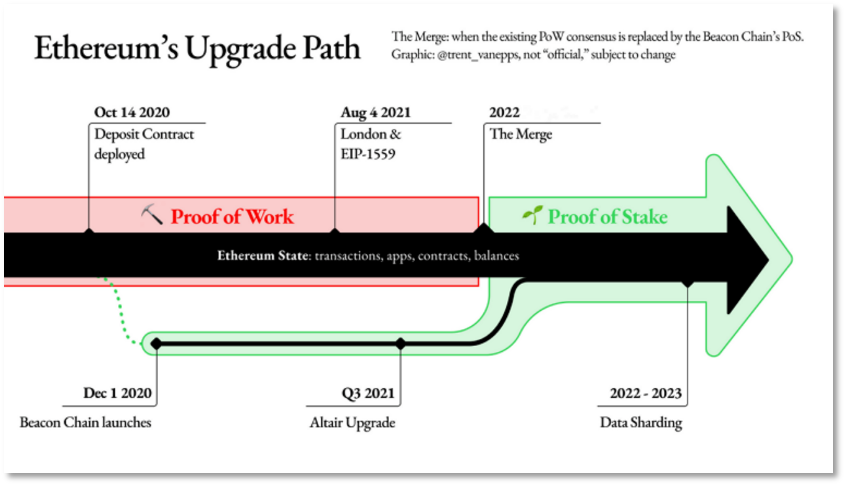Original Author: Crazy Metaverse
There are a group of miners in the digital circle. They buy graphics cards for computing power mining and obtain the block reward ETH on the Ethereum blockchain. However, as the price of ETH rose in 2020, in order to obtain more benefits, miners took away a large number of 30-series new graphics cards from the market. , The price of the graphics card doubles and doubles again, and gamers suffer unspeakably.
However, after entering 2022, graphics card prices began to fall. Because, according to the plan, the script of Ethereum "merging" is getting closer.
Why should Ethereum upgrade to 2.0?
When it comes to Web3, one has to mention the king of public chains——Ethereum. The birth of Bitcoin in 2008 brought blockchain technology; in 2013, Ethereum closely combined blockchain and smart contracts, allowing us to develop various blockchain applications on the blockchain. After that, Web3 applications have the soil for survival and development.
Ethereum is positioned as the "world computer", with the world's largest developer community and the largest number of DAPPs. However, as the king of the public chain, Ethereum, the user experience is not good.
It can be seen on the OKLink blockchain browser that the current PoW algorithm of the Ethereum blockchain will package a block about every 15 seconds, and each block will contain 150-300 transactions, converted to one second That means only 10-20 transactions can be processed. If you are grabbing red envelopes, your group of friends have already started sending "Thank you boss", and you are obviously the first to see and order, but you are still going around in circles, this is unbearable!
It is not difficult to guess that such an Ethereum network often has network congestion. At this time, if you want to close the transaction faster, you have to pay more handling fees, which can even cost hundreds of dollars in handling fees at peak times. Whenever this happens, the user experience becomes very bad. It is also for these reasons that the processing speed of Ethereum cannot even support ordinary commercial applications, let alone make it into a "world computer".
In order to achieve the goal of the world's computer, Ethereum set four development stages at the beginning of its birth in 2014: Frontier (cutting edge), Homestead (homestead), Metropolis (metropolis), and Serenity (tranquility). Now that the first three stages have been completed, the fourth stage Serenity (Serenity) is the final form of Ethereum, which is what we often call Ethereum 2.0.
So how is Ethereum 2.0 designed?
image description
The process of upgrading Ethereum to 2.0
Ethereum 2.0 improves the processing capacity of the network by introducing shard chains. The current plan is to establish 64 shard chains, and each shard has a group of verifiers responsible for packaging and verifying blocks. The original Ethereum mainnet (PoW Main Chain) will eventually become a shard. Just imagine, with the same transaction pool, now there are so many chains processing at the same time, just like a road suddenly becomes 64 in width, the processing speed will be greatly accelerated, and everyone's experience will be smoother.
image description

The network structure of Ethereum 2.0
In addition, another major change in Ethereum 2.0 is to convert PoW mining into PoS mining. Dear viewers and friends, the focus is on, the final exam must be taken! We can understand PoW mining as everyone earning ETH rewards through mining machine calculations to obtain block qualifications. In order to protect the stability of the chain, it will automatically adjust the difficulty of the questions to ensure a stable number of blocks within a certain period of time. Because the pie is a certain amount, the more mining machines there are, the more inward it will be. This consumes a huge amount of electricity every year. According to Digiconomist data, miners around the world consume as much as 93.98 trillion watt-hours of electricity per year, which is close to 94 billion kWh. Whoa! No wonder it is listed as backward production capacity by the country, it consumes too much electricity!
After switching to PoS mining, everyone can obtain block production qualifications and earn rewards by staking ETH. From offline equipment mining to online pledge mining. In this way, everyone will vote amicably to decide who will be responsible for the calculation of the next block, which perfectly solves the problem of wasting electric energy.
Ethereum's "quiet" phase progresses in steps
image description

Beacon chain node data
image description

Ethereum Upgrade Roadmap
The merger is to merge the beacon chain run by PoS with the original chain run by PoW, and gradually stop the PoW part of the original chain. This upgrade means that Ethereum will switch to the PoS consensus in the near future. This will bring drastic changes to the mining industry of Ethereum, because after Ethereum is converted from P0W to PoS mining, the original PoW miners will not be able to continue to participate in Ethereum mining.
For Ethereum miners, the only thing they can do now is to run full steam until the last PoW block is generated. After that, miners will no longer hoard graphics cards, so the price of graphics cards will definitely decrease.
Original link





